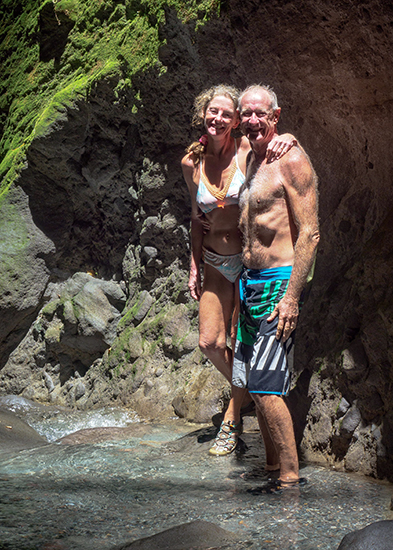
Martinique is unlike any other Caribbean island we have visited. The French have provided many improvements such as football fields with goal posts and asphalt roads with white lines, and also a superbly efficient check-in process for yachts. On arriving in Le Marin we went straight to the Capitaniere’s office which was kitted out with several computers. It took about 15 minutes to complete an entry form on-line, show our passports and vaccination certificates and then we were in.
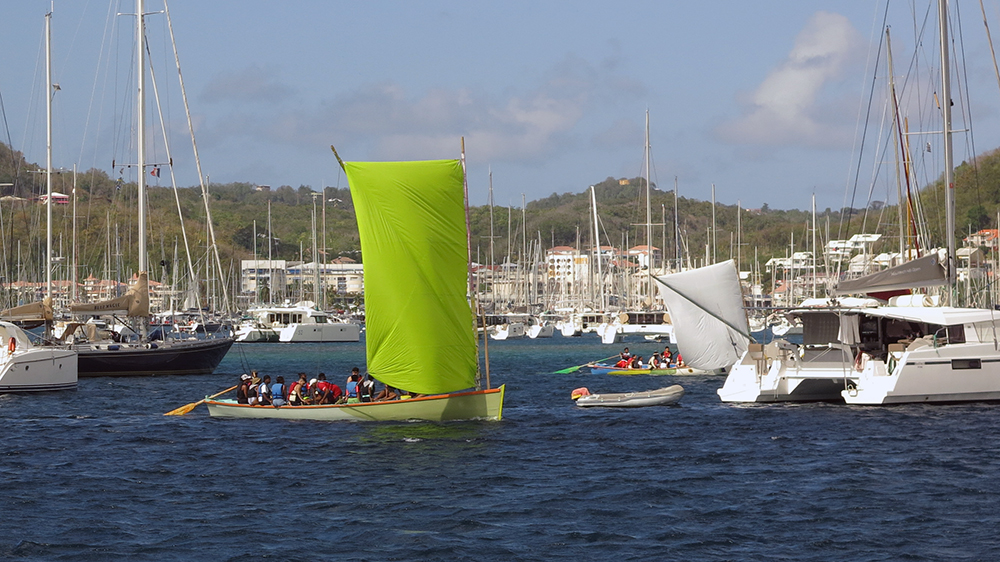
The bay at Le Marin was incredibly crowded with at least three hundred boats crammed into the marinas, tied on moorings or swinging on anchor. In every direction all we could see was masts – it felt like a massive parking lot for yachts. Onshore there is an extensive range of technical facilities for repair and maintenance, brokerage and boat storage, and the supermarkets are heavenly! They are stocked with a huge range of cheese and charcuterie, good cheap wine and treats like rabbit pate and duck confit. We loaded the boat with goodies for ourselves and for shopping lists from friends in Grenada.
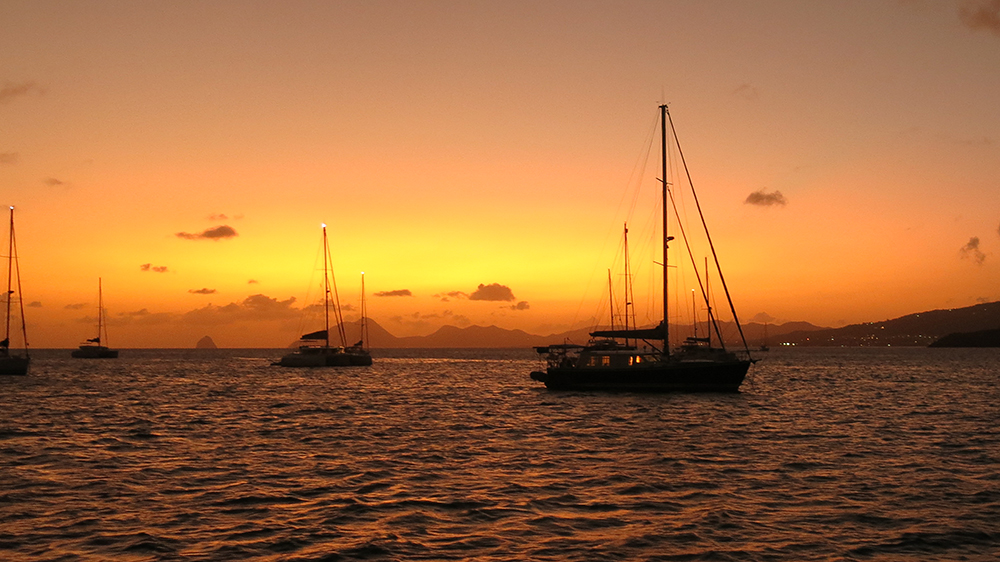
After several days of retail therapy we moved to St. Anne, a large bay to the south which was equally crowded with yachts. The village has a very French atmosphere with a pretty church spire, a shady central square lined with small boutiques and a boulangerie on the corner. We soon got back into the habit of picking up a baguette for lunch each day – so convenient.
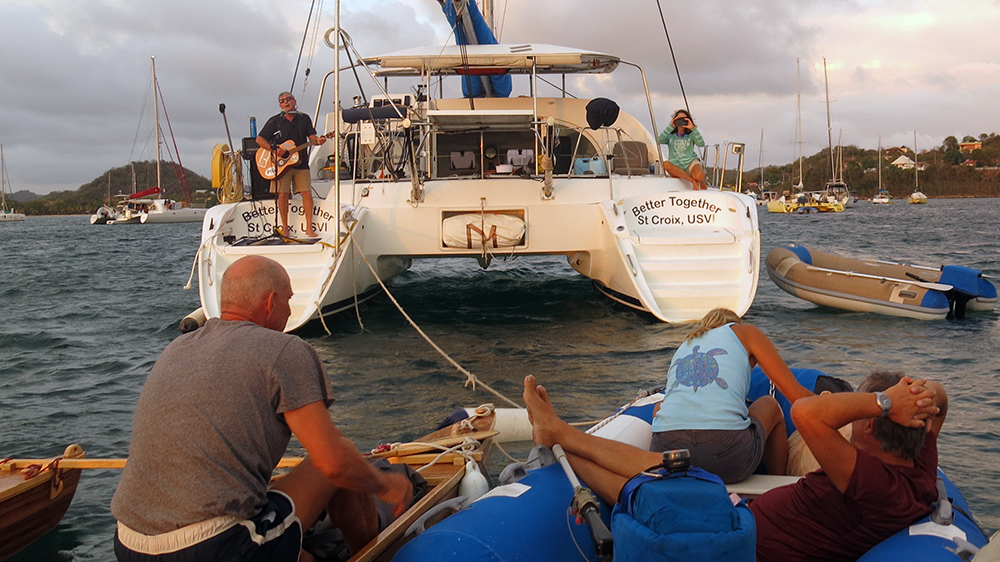
In amongst the hundreds of yachts we found a few old friends and some new ones. Life in St. Anne was very social with a beach braai on Thursdays and a late lunch at Café Boubou on Sunday afternoons. One evening Jerry on S/V Better Together put on a dinghy concert. He set up his guitar, amp and mike on the back deck and dinghies from all around came and tied up behind his boat. He played for an hour or two as the sun went down, it was magical.
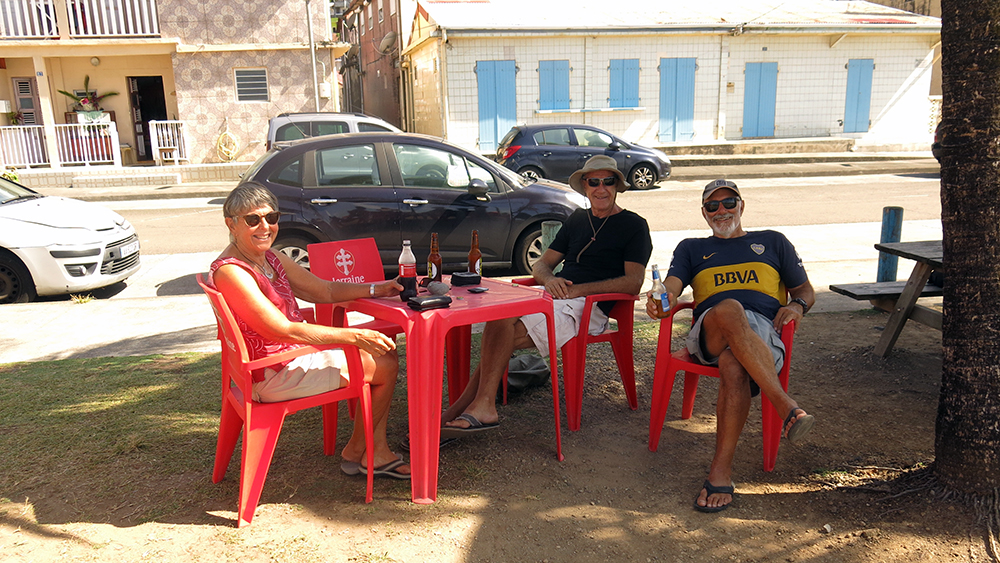
While we were anchored in Le Marin we met Cindi and Adam on S/V Bravo. They had put out a call on the radio for a salinity meter and we had one. They came over and after we tested the water got chatting. Their boat is a Boreal built in France two years ago is the same make and model as the one Anthony (Neil’s brother-in-law) is about to launch. It turns out that Cindi and Adam have been swapping information and ideas with Anthony throughout the build of his boat. Small world!
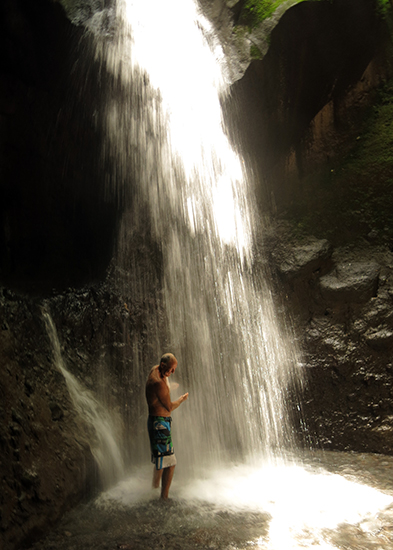
We hired a car with them for a couple of days and set off to explore the island. The first day we headed north, it was a long drive along windy roads through jungle covered mountains to reach the Falaise Gorge at the foot of Mount Pelee. Wearing nothing more than swimming togs and reef shoes we descended into the gorge then followed a river for about 300m, clambering over rocks and swimming through pools. Eventually we arrived at a cliff where the water cascades down about 50m, it was a stunning walk.
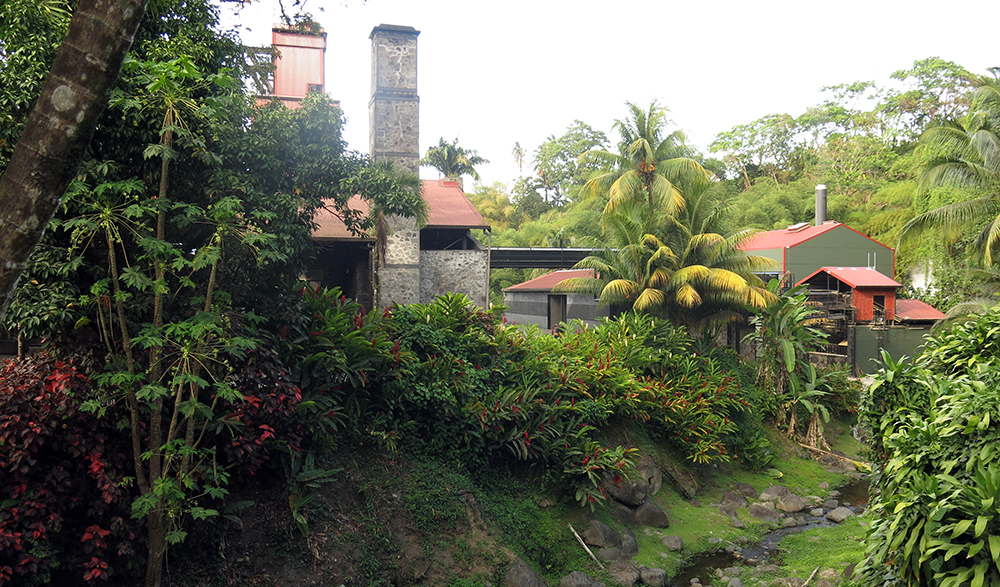
We drove to Grande Riviere at the northern end of the island where we ate lunch as we gazed across the channel to Dominica, the next island in the chain and the first of the Leeward Islands. On the way back we stopped at the Rhum J.M. distillery and managed to squeeze in a couple of tastings just before they closed.
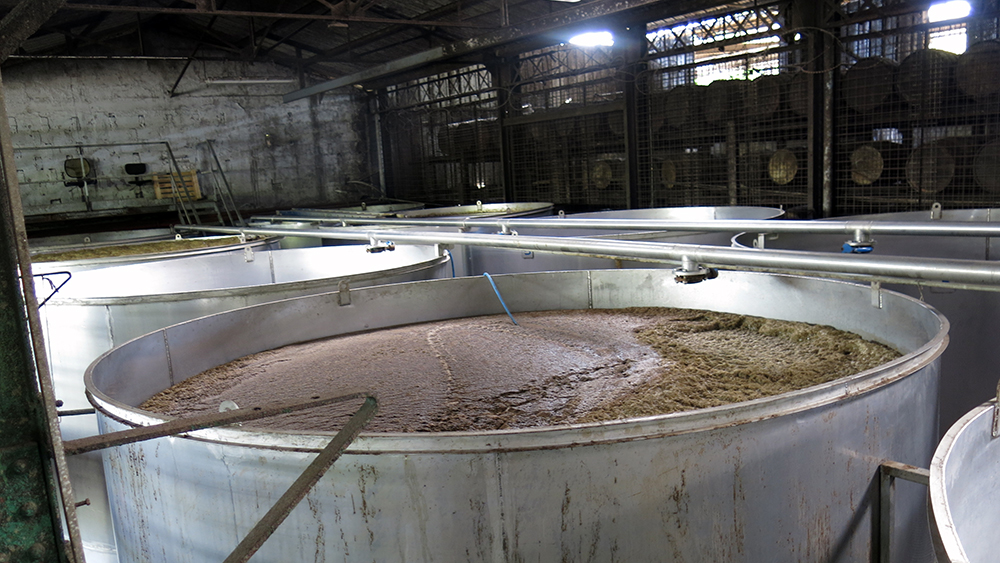
The next day we visited Trois Islets, the village where Josephine de Beauharnais who later became the wife of Napoleon Bonaparte was born. We toured the Savane des Esclaves where a village has been recreated to show the way the slaves lived on the island as well as the lifestyle of the earlier Caribe people. After lunch and a tour of the La Favorite rum distillery we indulged in a shopping spree at the Galleria Mall – another great day out!
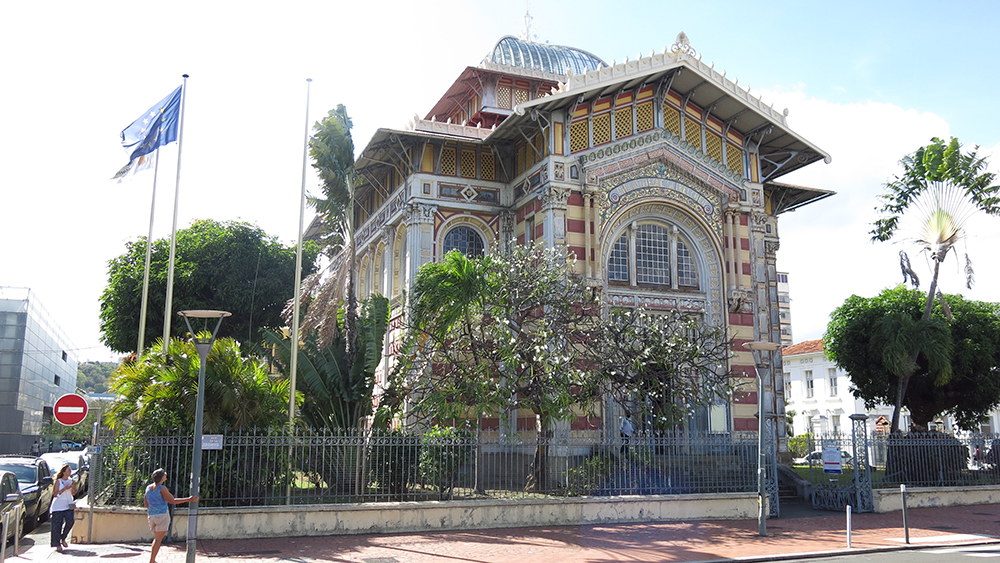
A few days later we headed to Fort de France, the capital of Martinique, and anchored in front of the park beside the old fort. We enjoyed wandering around the market and the surrounding streets and visited the exquisite Schoelcher Library. It was first built in France in 1887 as the Indochina pavilion of the Universal Exhibition of Paris and was later shipped piece by piece to Martinique and reconstructed for use as a library. The nearby St. Louis Cathedral is also constructed with an iron frame in order to withstand earthquakes, hurricanes and fire which had destroyed the previous six incumbents.
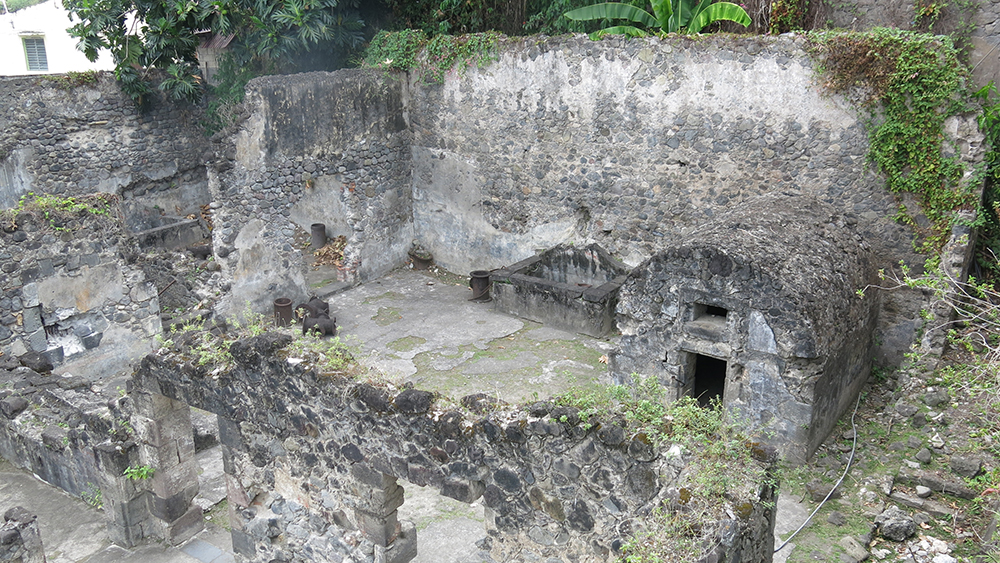
Our last port of call in Martinique was St. Pierre, the previous capital which was destroyed by the eruption of Mount Pelee in 1902. Anchorage is forbidden in a large area of the bay where the wrecks of twelve ships that sank during the eruption are located. The town has been rebuilt around the ruins but the crumbling buildings and the odd gaps between the houses retain a sense of devastation . . . perhaps it was the grey drizzly weather which made the place feel so gloomy.
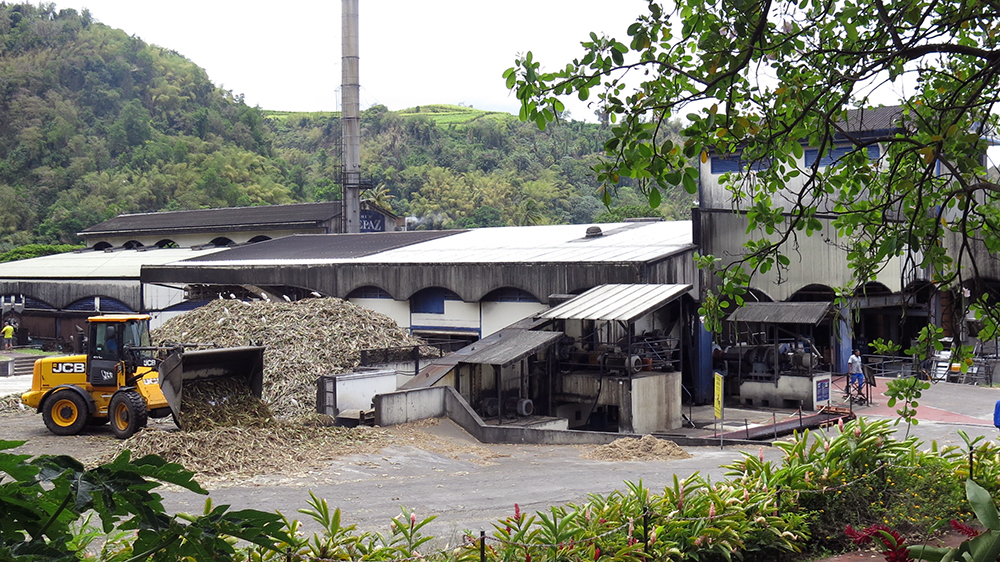
We walked out of town through the sugar cane fields to the Depaz rum distillery. It is possible to wander around and watch every aspect of the rum production from the cane being crushed to the room where the barrels of rum are aged. It was surprising to see how traditional the process was including the old steam engine which powered the grinders and mills as well as providing steam to the distillation columns. We really enjoyed a couple of hours touring the factory followed by a little rum tasting.
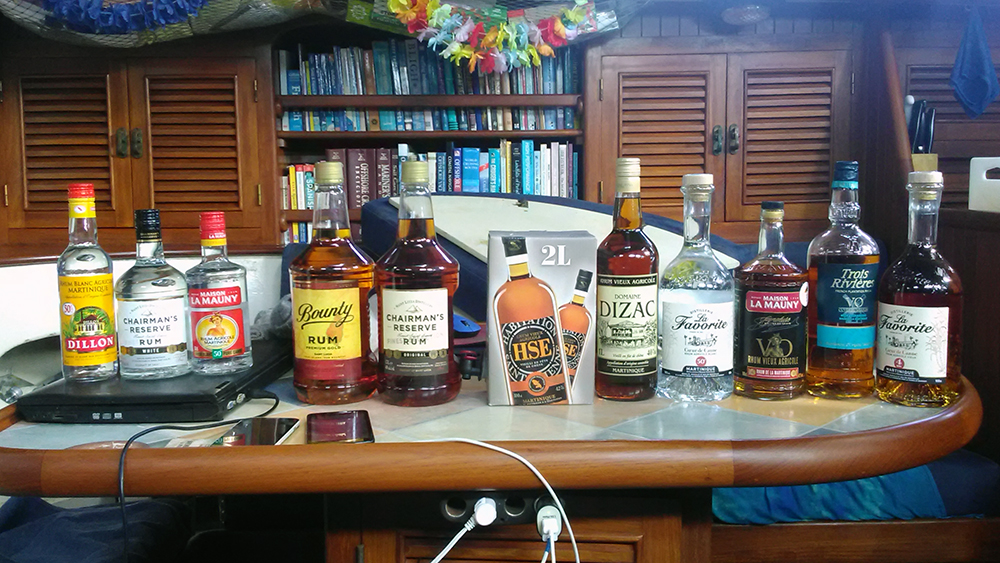
With all the good things we found in Martinique we also felt that it had lost something of its Caribbean soul. Life on the street was quiet with no music blasting out from open windows, no minibuses touting for business, no old fellas sitting liming outside a rum shop, no “yeah mon!”
We are looking forward to getting back into the spirit of the Caribbean in Dominica.
Suzy and Neil
